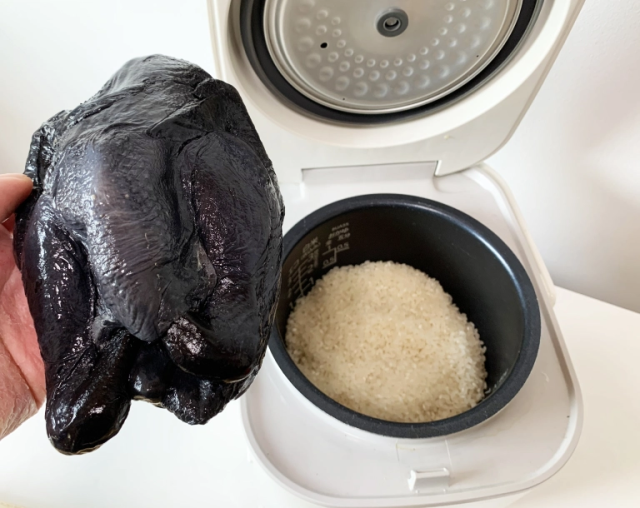
When the opportunity to recreate a mouthwatering manga meal comes up, we’re not going to turn it down.
Ameya Yokocho, a network of shopping streets near Ueno Station, is one of the most colorful places for bargain hunting in Tokyo, with shops offering all sorts of clothing and foodstuff at rock-bottom prices. But while Ameya Yokocho is on the up and up these days, back in the 1940s it was known as one of the city’s postwar black markets.
So really, it makes sense that Ameya Yokocho is where we bought a jet-black chicken.
Our Japanese-language reporter Seiji Nakazawa spotted this fearsome foul on a shopping run in Ameya Yokocho. At first he wasn’t sure what it was, but the dark mass in a store’s glass-fronted freezer beckoned to him. As he got closer, he could see that it was some sort of meat, but he couldn’t tell what creature it came from until he read the label and saw the characters 烏骨鶏.
Pronounced ukkokei in Japanese, the same characters are read as wu gu ji in Chinese and refer to the Silkie, also known as the Chinese silk chicken, a breed of chicken with unusually soft and fine feathers that look almost like fur. However, what really makes the Silkie unique is that the bird’s melanin is found deep beneath the skin’s surface, making its meat black or dark gray.
▼ The darkest chicken since convenience store Lawson’s Black Hole-flavored Karaage-kun
Seiji had never seen a Silkie in person, but he distinctly remembers that in competitive cooking anime/manga Chuka Ichiban the main character Mao cooks one to win a culinary tournament. Between that endorsement and the whole bird costing just 1,500 yen (US$14), Seiji decided to buy it and recreate the manga meal.
In the story, Mao stuffs the chicken with rice and seasonings, then stews it in rice wine. Because of the small size of his Silkie, though, Seiji instead decided to slice the chicken and cook it in his rice cooker along with the grains.
However, he ran into a problem almost immediately.
The most complicated meat prep work Seiji has ever done is tearing the plastic wrap off of a pack of chicken thighs from his local supermarket. His first instinct was to just grab a knife and start slicing the Silkie like it was a cake, but cakes don’t have bones.
Making poor progress, Seiji whipped out his phone and pulled up a couple “how to carve a chicken” videos on YouTube for reference. His bird had been frozen with its legs folded forward in order to take up less space in the freezer, though, so the video examples weren’t an exact match for what he was working with. Ultimately, he decided to cover for his lack of technique by applying extra brute strength, making cuts wherever he could force the knife to chop through.
▼ The intimidating color gave the talons a particularly menacing aura.
His inelegant methods probably dulled his kitchen knife’s edge, but eventually Seiji had cut the chicken into pieces small enough to fit in his rice cooker. In addition to the meat, rice, and necessary amount of water, he also added two tablespoons of sake.
In Seiji’s manga inspiration, Mao also stuffs the chicken with seasonings. Seiji had bought some green onions for that purpose, but by this point his rice cooker was already looking pretty full. Trusting that the sake and natural flavors of the unnatural-looking chicken would be enough, he closed the lid and hit the start button.
45 minutes later, the cooking process was done. Seiji cautiously opened up the lid…
…and was greeted by an inky darkness that reminded him of the Oreo rice we made a while back.
The rice hadn’t become completely recolored, but it was definitely a darker shade of gray from the almost-radiant white it normally would be.
Now time for the moment of truth, Seiji dished up, took a bite, and…
…was shocked by how ordinary it tasted.
Sure, it was nice-tasting chicken and all, but his prediction that eating such an ominous-looking fowl would give him a shockingly stimulating flavor, and perhaps also the power to raise an army of the dead through dark magic, turned out to be incorrect. If anything, the results were pretty plain on the palate, though after adding a dash of salt the dish suddenly started to really please his taste buds.
In retrospect, Seiji’s enthusiasm for animation might have overly boosted his expectations, and he also admits that things might have gone better had he followed Mao’s example more closely. Still, it’s not like it tasted bad, and if you’re looking for a way to give your cooking some unforgettable visual impact, this is about as impactful as you can get without using edible bamboo worms and crickets.
Images ©SoraNews24
● Want to hear about SoraNews24’s latest articles as soon as they’re published? Follow us on Facebook and Twitter!
[ Read in Japanese ]
Follow Casey on Twitter, where he highly recommends Chuka Ichiban’s Maki Oguro opening theme “Sora.”

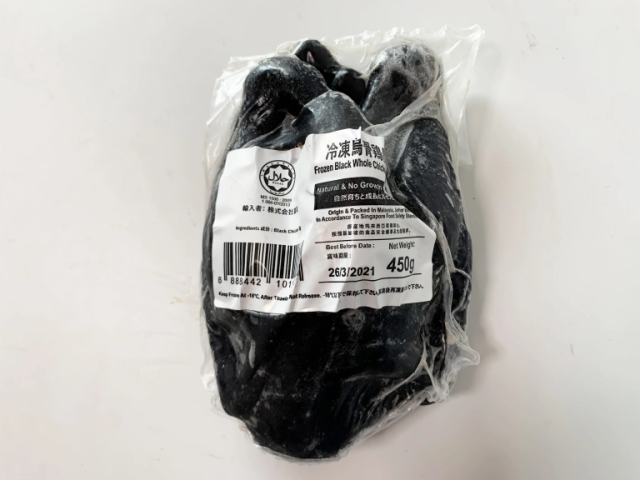
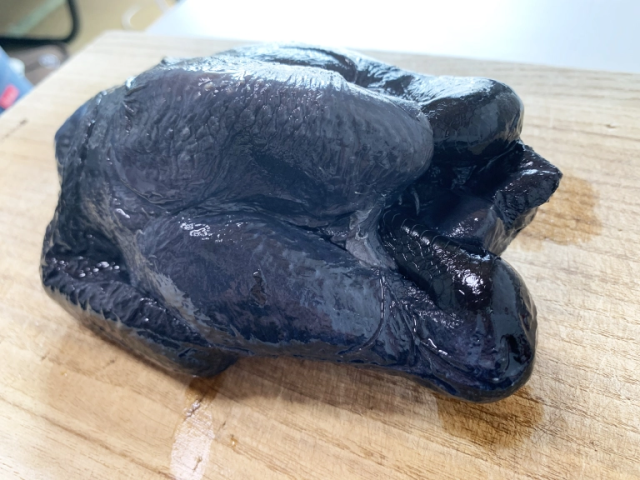
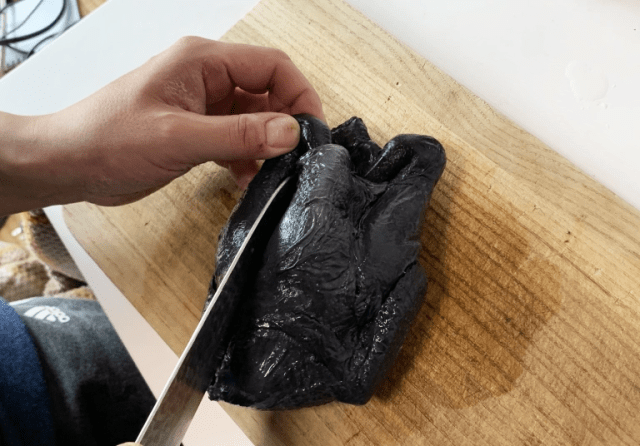
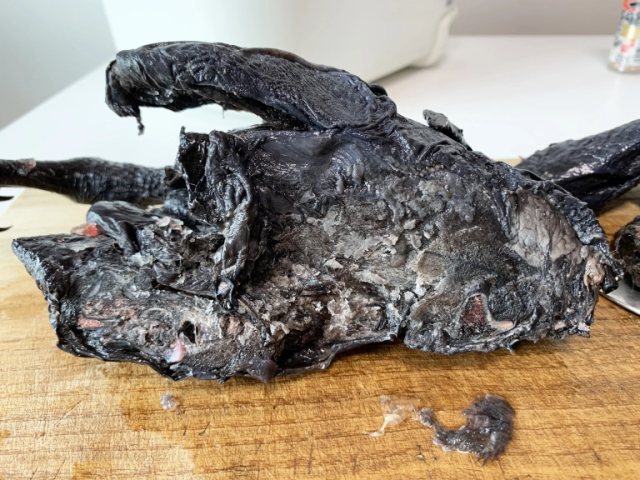
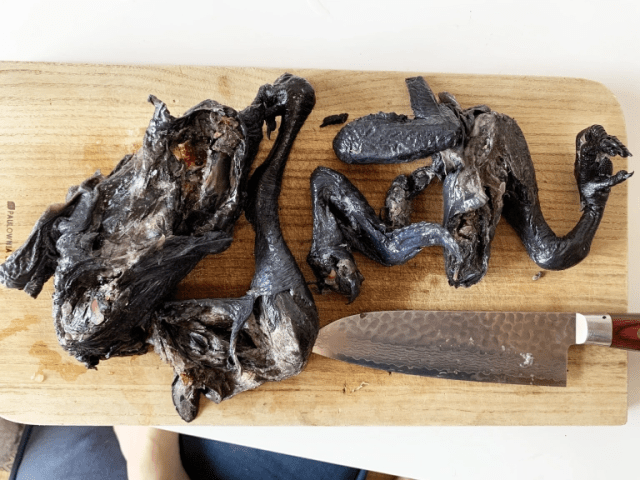
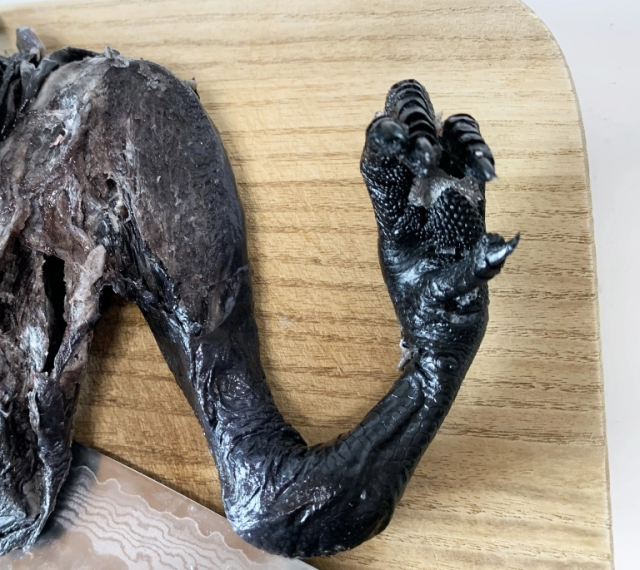
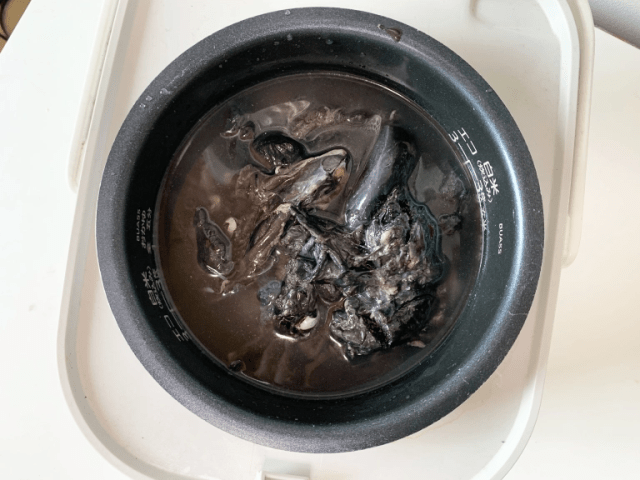
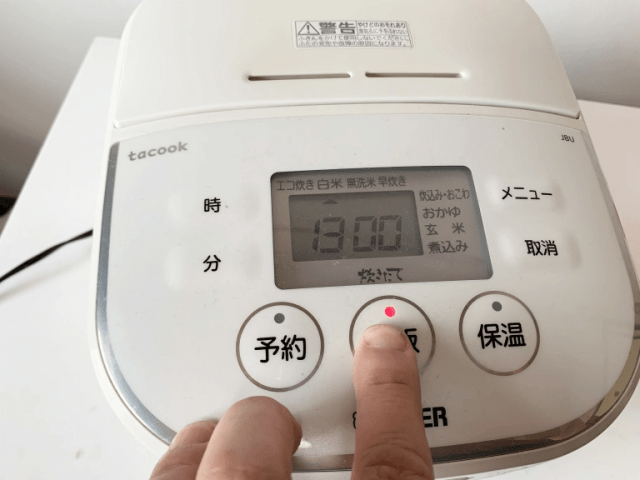
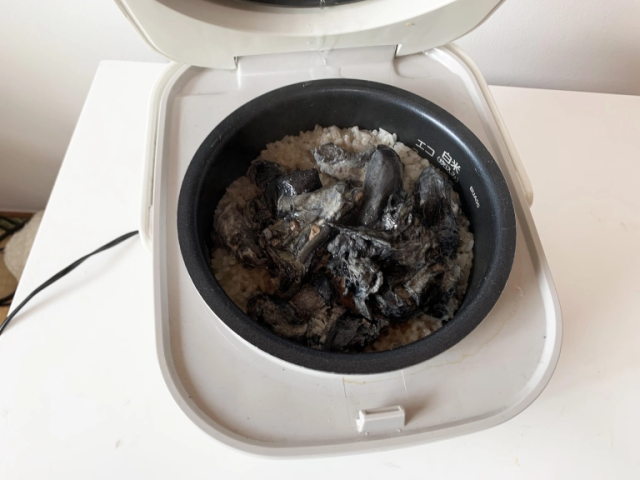


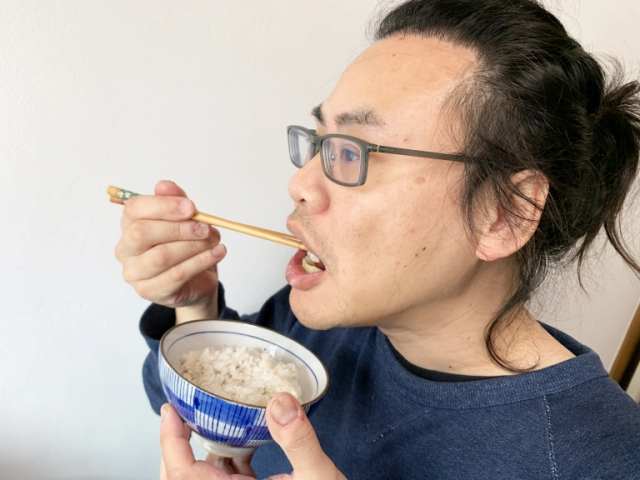

 Chicken McNugget rice cooker rice — Can it beat KFC rice cooker rice?【SoraKitchen】
Chicken McNugget rice cooker rice — Can it beat KFC rice cooker rice?【SoraKitchen】 Can you make KFC takikomi gohan in a rice cooker, and is it something worth eating?【SoraKitchen】
Can you make KFC takikomi gohan in a rice cooker, and is it something worth eating?【SoraKitchen】 Did you know your rice cooker is also a ramen rice cooker?【SoraKitchen】
Did you know your rice cooker is also a ramen rice cooker?【SoraKitchen】 Mr. Sato shows us what happens when you try to cook rice with only eggs 【SoraKitchen】
Mr. Sato shows us what happens when you try to cook rice with only eggs 【SoraKitchen】 A faster, easier way to make cake: Use a rice cooker【SoraKitchen】
A faster, easier way to make cake: Use a rice cooker【SoraKitchen】 Ramen restaurant’s English menu prices are nearly double its Japanese ones, denies discriminating
Ramen restaurant’s English menu prices are nearly double its Japanese ones, denies discriminating Rakuten randomly offers 58 New Year’s osechi feasts in Japan, but did we get a star or a dud?
Rakuten randomly offers 58 New Year’s osechi feasts in Japan, but did we get a star or a dud? Things get heavy with the Gold Lucky Bag from Village Vanguard
Things get heavy with the Gold Lucky Bag from Village Vanguard 7 great places to see Mt. Fuji from without having to climb it
7 great places to see Mt. Fuji from without having to climb it Here’s what our bachelor writers ate over the New Year’s holiday in Japan
Here’s what our bachelor writers ate over the New Year’s holiday in Japan Nearly one in ten young adults living in Japan isn’t ethnically Japanese, statistics show
Nearly one in ten young adults living in Japan isn’t ethnically Japanese, statistics show An overnight trip on the Sunrise Izumo, Japan’s awesome Tokyo-Shimane sleeper train【Photos】
An overnight trip on the Sunrise Izumo, Japan’s awesome Tokyo-Shimane sleeper train【Photos】 Taiwan’s most beautiful politician kicks groper in balls during visit to Japan
Taiwan’s most beautiful politician kicks groper in balls during visit to Japan Cup Noodle releases new Tomica “car” collection
Cup Noodle releases new Tomica “car” collection 7 reasons why you should visit Aomori Prefecture
7 reasons why you should visit Aomori Prefecture Japanese beef bowl chain Sukiya’s 2026 Smile Box lucky bag basically pays for itself
Japanese beef bowl chain Sukiya’s 2026 Smile Box lucky bag basically pays for itself Starbucks Japan ready to get Year of the Horse started with adorable drinkware and plushies【Pics】
Starbucks Japan ready to get Year of the Horse started with adorable drinkware and plushies【Pics】 Hayao Miyazaki says Happy New Year to Studio Ghibli fans with new art for Year of the Horse
Hayao Miyazaki says Happy New Year to Studio Ghibli fans with new art for Year of the Horse Cup Noodle tries an authentic Jiro-style ramen, but something’s not quite right
Cup Noodle tries an authentic Jiro-style ramen, but something’s not quite right Top Japanese cosplayer Enako returns to Comiket after 6 years, creates mayhem with admirers
Top Japanese cosplayer Enako returns to Comiket after 6 years, creates mayhem with admirers The best Starbucks Japan Frappuccinos we want to drink again in 2026
The best Starbucks Japan Frappuccinos we want to drink again in 2026 We revisited Sweets Paradise after a decade to see if Japan’s dessert buffet still delivers
We revisited Sweets Paradise after a decade to see if Japan’s dessert buffet still delivers That time Seiji called JASRAC to ask why he didn’t get paid royalties for his song being on TV
That time Seiji called JASRAC to ask why he didn’t get paid royalties for his song being on TV Pizza Hut Japan’s hot lucky bags are perfect for a New Year’s pizza party
Pizza Hut Japan’s hot lucky bags are perfect for a New Year’s pizza party Majority of Japanese mayors say foreign residents are essential but most see good and bad effects
Majority of Japanese mayors say foreign residents are essential but most see good and bad effects 7-Eleven Japan starts new temporary luggage storage service in over 300 branches
7-Eleven Japan starts new temporary luggage storage service in over 300 branches Disillusionment at Tsukiji’s tourist-target prices led us to a great ramen restaurant in Tokyo
Disillusionment at Tsukiji’s tourist-target prices led us to a great ramen restaurant in Tokyo Starbucks teams up with 166-year-old Kyoto doll maker for Year of the Horse decorations【Photos】
Starbucks teams up with 166-year-old Kyoto doll maker for Year of the Horse decorations【Photos】 Tokyo considering law requiring more trash cans following litter increase in heavily touristed area
Tokyo considering law requiring more trash cans following litter increase in heavily touristed area Tokyo’s Tsukiji sushi neighborhood asks tour groups to stay away for the rest of the month
Tokyo’s Tsukiji sushi neighborhood asks tour groups to stay away for the rest of the month Tokyo event lets you travel back in time, for free, to celebrate 100 years since Showa era start
Tokyo event lets you travel back in time, for free, to celebrate 100 years since Showa era start Japan may add Japanese language proficiency, lifestyle classes to permanent foreign resident requirements
Japan may add Japanese language proficiency, lifestyle classes to permanent foreign resident requirements Sanrio theme park in Japan announces plans to expand into a Sanrio resort
Sanrio theme park in Japan announces plans to expand into a Sanrio resort Lacquerware supplier to emperor of Japan and Pokémon team up for new tableware
Lacquerware supplier to emperor of Japan and Pokémon team up for new tableware Survey asks foreign tourists what bothered them in Japan, more than half gave same answer
Survey asks foreign tourists what bothered them in Japan, more than half gave same answer Japan’s human washing machines will go on sale to general public, demos to be held in Tokyo
Japan’s human washing machines will go on sale to general public, demos to be held in Tokyo Japan’s deadliest food claims more victims, but why do people keep eating it for New Year’s?
Japan’s deadliest food claims more victims, but why do people keep eating it for New Year’s? We deeply regret going into this tunnel on our walk in the mountains of Japan
We deeply regret going into this tunnel on our walk in the mountains of Japan Studio Ghibli releases Kodama forest spirits from Princess Mononoke to light up your home
Studio Ghibli releases Kodama forest spirits from Princess Mononoke to light up your home Major Japanese hotel chain says reservations via overseas booking sites may not be valid
Major Japanese hotel chain says reservations via overseas booking sites may not be valid Put sesame oil in your coffee? Japanese maker says it’s the best way to start your day【Taste test】
Put sesame oil in your coffee? Japanese maker says it’s the best way to start your day【Taste test】 No more using real katana for tourism activities, Japan’s National Police Agency says
No more using real katana for tourism activities, Japan’s National Police Agency says Starbucks Japan reveals new sakura drinkware collection, inspired by evening cherry blossoms
Starbucks Japan reveals new sakura drinkware collection, inspired by evening cherry blossoms Updated cherry blossom forecast shows extra-long sakura season for Japan this year
Updated cherry blossom forecast shows extra-long sakura season for Japan this year How to make a massive five-layer lasagna…in your rice cooker【SoraKitchen】
How to make a massive five-layer lasagna…in your rice cooker【SoraKitchen】 Rice cooker kuri gohan and two more super-easy chestnut recipes to make this fall【SoraKitchen】
Rice cooker kuri gohan and two more super-easy chestnut recipes to make this fall【SoraKitchen】 Ultimate lazy chanko – Can you make Japan’s sumo wrestler hot pot stew in a rice cooker?
Ultimate lazy chanko – Can you make Japan’s sumo wrestler hot pot stew in a rice cooker? What happens when you cook beer with potato chips in a rice cooker?
What happens when you cook beer with potato chips in a rice cooker? Nametake tuna rice: A delicious rice cooker recipe using just three ingredients【SoraKitchen】
Nametake tuna rice: A delicious rice cooker recipe using just three ingredients【SoraKitchen】 How to cook rice in a Ziploc container【SoraKitchen】
How to cook rice in a Ziploc container【SoraKitchen】 Ultimate lazy sukiyaki – Can you make the king of Japanese hot pots in a rice cooker?【Taste test】
Ultimate lazy sukiyaki – Can you make the king of Japanese hot pots in a rice cooker?【Taste test】 This is what happens when you cook rice with coffee in your rice cooker 【Rocket Kitchen】
This is what happens when you cook rice with coffee in your rice cooker 【Rocket Kitchen】 You can make rice with tapioca bubble tea, and it’s surprisingly tasty【SoraKitchen】
You can make rice with tapioca bubble tea, and it’s surprisingly tasty【SoraKitchen】 How to make a massive deep dish Chicago Pizza…in your rice cooker
How to make a massive deep dish Chicago Pizza…in your rice cooker 7-Eleven Japan’s egg broth and rice may be the dream combination we’ve been missing【SoraKitchen】
7-Eleven Japan’s egg broth and rice may be the dream combination we’ve been missing【SoraKitchen】 How to make microwave rice packs into something you’ll actually be happy to eat【SoraKitchen】
How to make microwave rice packs into something you’ll actually be happy to eat【SoraKitchen】 Ultimate bachelor chow recipe: Cheeseburger-style furikake toast【SoraKitchen】
Ultimate bachelor chow recipe: Cheeseburger-style furikake toast【SoraKitchen】 Japanese mom cooking – A super easy recipe for daikon, Japan’s giant radishes【SoraKitchen】
Japanese mom cooking – A super easy recipe for daikon, Japan’s giant radishes【SoraKitchen】 How to make no-rice “fried rice”【SoraKitchen】
How to make no-rice “fried rice”【SoraKitchen】 We try Kaldi’s microwavable Omelet Rice to find out if it really cooks that easily【SoraKitchen】
We try Kaldi’s microwavable Omelet Rice to find out if it really cooks that easily【SoraKitchen】
Leave a Reply